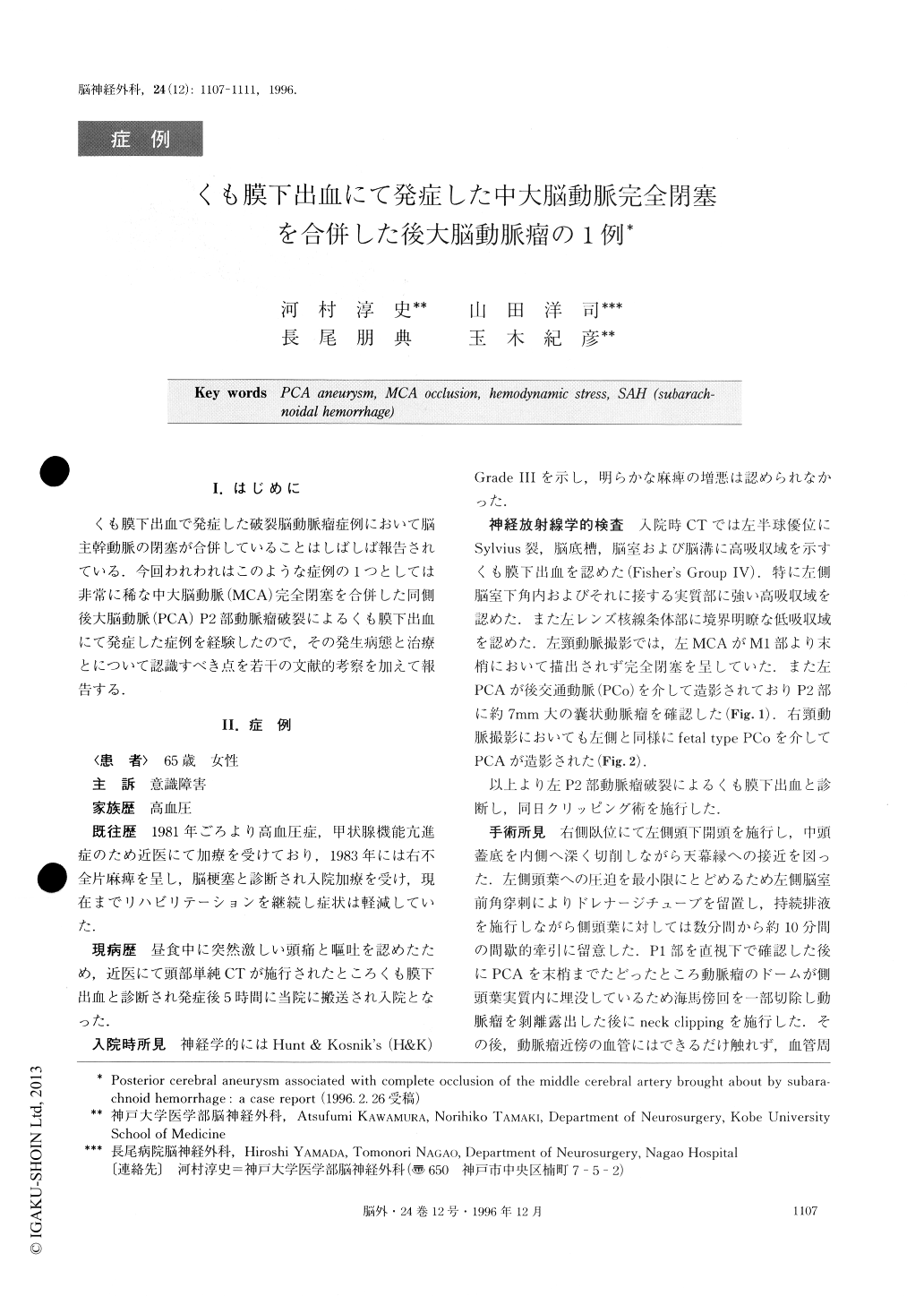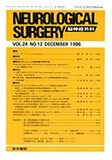Japanese
English
- 有料閲覧
- Abstract 文献概要
- 1ページ目 Look Inside
I.はじめに
くも膜下出血で発症した破裂脳動脈瘤症例において脳主幹動脈の閉塞が合併していることはしばしば報告されている.今回われわれはこのような症例の1つとしては非常に稀な中大脳動脈(MCA)完全閉塞を合併した同側後大脳動脈(PCA)P2部動脈瘤破裂によるくも膜下出血にて発症した症例を経験したので,その発生病態と治療とについて認識すべき点を若干の文献的考察を加えて報告する.
The authors reported a rare case of subarachnoid hemorrhage (SAH) from a left posterior cerebral artery (PCA) aneurysm at P2 portion associated with com-plete occlusion of the ipsilateral middle cerebral artery (MCA).
A 65-year-old female suddenly complained of severe headache and was admitted with disturbance of con-sciousness. Apart from her somnolent condition, she showed no significant neurologic deficits such as apha-sia or right hemiparesis. CT scan revealed the finding of SAH dominant in the left sylvian fissure and basal cistern. A small low density area which was considered as an old infarction was also recognized in the left putamen. Angiogram showed a left P2 portion aneurysm associated with complete occlusion of the ipsilateral MCA at its origin. Bilateral PCA was mainly supplied via posterior communicating artery (PCo) from anterior circulation. The clipping of the aneurysm was performed via a subtemporal approach 5 hours af-ter the attack with special attention and care to prevent secondary brain damage due to the ishemic state caused by MCA occlusion. Transient neurological com-plication such as aphasia and right hemiparesis appeared postoperatively for a few days but recovered almost completely in a week after the ventriculo-peritoneal shunt. Indication, timing and technique of operation and management after the operation must be well-discussed for cases of subarachnoid hemorrhage due to an aneurysm associated with ischemic cerebro-vascular disease. In our case, we took special care con-cerning the following points to prevent ischemic com-plications. 1) The drilling of the temporal bone and a ventricular drainage were performed to ensure mini-mum retraction of the temporal lobe. 2) Retraction of the cortex was done intermittently to protect the brain from damage as much as possible. 3) Hypotensive con-ditions were avoided during and after surgery. 4) Con-tinuous infusion of Nicardipine and hypertensive & hypervolemic therapy was started immediately to pre-vent any complication due to vasospasm. 5) Gentle surgery was carried out around the ischemic brain and vessels. The postoperative result suggested that our treatment to prevent postoperative ischemic complica-tions due to complete occlusion of the right MCA was effective.
In this paper we discussed the etiology of P2 portion aneurysm from the literature and by angiographical morphologies. In this case, the P2 portion aneurysm was considered to be produced by increase of hemody-namic stress to the PCA via fetal type PCo due to MCA occlusion. To our hnowlegde, this paper is the only report of PCA aneurysm associated with MCA complete occlusion brought about by SAH.

Copyright © 1996, Igaku-Shoin Ltd. All rights reserved.


